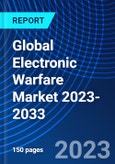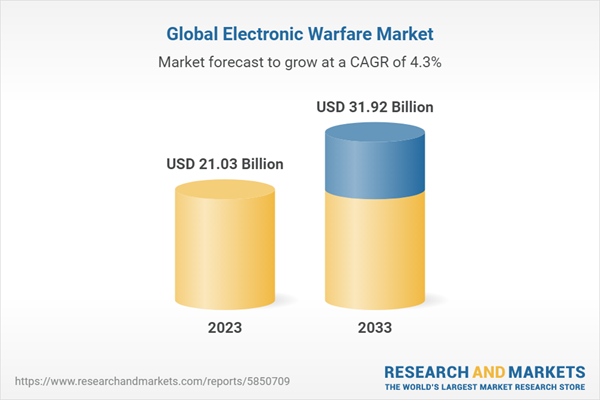Electronic Warfare (EW) is a crucial component of modern military operations, encompassing a range of technologies and tactics aimed at using electromagnetic energy to protect friendly forces, attack enemy capabilities, and control the electromagnetic spectrum. EW is vital for gaining and maintaining superiority in the electromagnetic domain, which includes communication, radar, and electronic systems.The Silent Warfare Which Could Result in Billions of Dollars of Defense Equipment Useless
Electronic Attack involves the use of electromagnetic energy to disrupt, deceive, or damage enemy electronic systems. This can include jamming enemy radar, communication systems, or GPS signals to disrupt their operations.
Electronic Protection focuses on defending friendly electronic systems from enemy attacks. It includes measures such as shielding, frequency hopping, and encryption to safeguard against jamming and interference.
Electronic Warfare Support involves collecting, analyzing, and exploiting electromagnetic signals to gain intelligence on enemy capabilities, such as radar characteristics, communication patterns, and electronic emissions.
EW systems protect friendly forces by minimizing the effectiveness of enemy radar-guided weapons and communication jamming. EW capabilities are used to disrupt enemy communication and control systems, making it difficult for them to coordinate and respond effectively. Suppression of Enemy Air Defenses (SEAD) missions use electronic warfare to locate and neutralize enemy air defense systems, allowing friendly aircraft to operate in contested airspace. EW systems collect valuable intelligence by intercepting and analyzing enemy communications, radar emissions, and electronic signatures.
TRENDS INFLUENCING ELECTRONIC WARFARE MARKET GROWTH
The electronic warfare (EW) market is undergoing significant transformation due to advancements in technology, evolving threat landscapes, and changing military priorities.The emergence of advanced and sophisticated threats, including integrated air defense systems, anti-access/area-denial (A2/AD) capabilities, and electronic countermeasures by adversaries, is driving the demand for more capable and adaptive EW systems.
Achieving spectrum dominance is crucial for modern military operations. The need to control and manipulate the electromagnetic spectrum to disrupt enemy communications, navigation, and targeting systems is a significant driver of EW advancements.
EW is increasingly integrated with other domains, including cyber warfare and information operations. Adversaries are using a combination of EW and cyber capabilities to create complex and hybrid threats.
The use of artificial intelligence (AI) and machine learning (ML) in EW systems is growing. Cognitive EW enables real-time adaptation to changing threat environments and more efficient use of available spectrum.
These trends reflect the dynamic and evolving nature of electronic warfare. Defense organizations and industry players must adapt to these trends to provide effective and resilient EW capabilities in the face of emerging threats and challenges.
ELECTRONIC WARFARE MARKET FORECAST & DYNAMICS
The electronic warfare (EW) market is dynamic and influenced by various factors, including technological advancements, evolving threat landscapes, and defense budget priorities.Many nations were investing in the modernization of their armed forces, including the upgrade and procurement of advanced EW systems to enhance their operational capabilities.
EW was increasingly integrated with other domains, such as cyber warfare and information operations. The convergence of EW with these domains presented new challenges and opportunities.
Continuous advancements in EW technologies, including digital radio frequency memory (DRFM), directed energy weapons (DEWs), and adaptive jamming techniques, were driving innovation and competitiveness.
Effective spectrum management was essential as the electromagnetic spectrum became more crowded and contested. Coordinating and managing spectrum usage was necessary to ensure that EW systems could operate without interference.
RECENT DEVELOPMENTS
The US Army has resurrected its tactical capacity in electronic warfare, which had declined over the previous 20 years during the Cold War, as a result of the success of Electronic Warfare (EW) in the Russia-Ukraine conflict. While the TLS version is designed for larger formations, the BCT variation integrates cyber, electronic warfare, and signals intelligence equipment. Its bigger and more powerful version, the EAB, is designed for Division- and Corps-level formations. Modern warfare relies heavily on electromagnetic spectrum control since it is utilized for communication, missile guidance, and intercepting and destroying the communications of the opponent. The advancements follow Lockheed Martin's victory over a rival to continue development of the TLS-EAB prototype for the Army in June.Table of Contents
Executive Summary
Electronic warfare is classified into various categories, but the most general definition is the employment of any part of the electromagnetic spectrum in an attack. Everything from x-rays to visible light to infrared, microwaves, and radio waves is included in the electromagnetic spectrum. They are all the same thing, with the only difference being the wavelength.Table Information
| Report Attribute | Details |
|---|---|
| No. of Pages | 150 |
| Published | July 2023 |
| Forecast Period | 2023 - 2033 |
| Estimated Market Value ( USD | $ 21.03 Billion |
| Forecasted Market Value ( USD | $ 31.92 Billion |
| Compound Annual Growth Rate | 4.2% |
| Regions Covered | Global |









